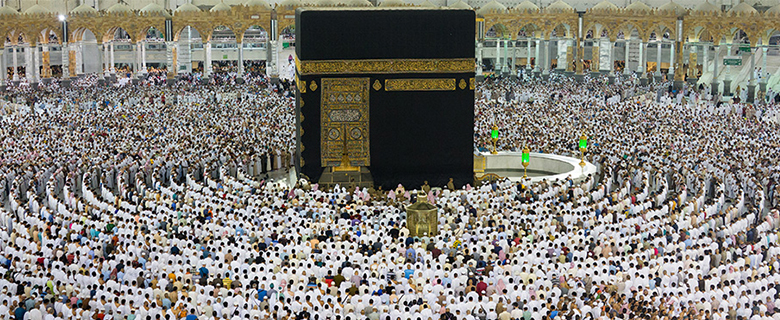
One of Islam’s holiest periods is almost upon us, as Muslims from across the world prepare for one of the most significant undertakings in their lives – the Hajj.
As one of the five pillars of Islam, the pilgrimage to Mecca - traditionally travelling to Medina to pray at Al-Masjid an-Nabawi on the way - is something that every Muslim should complete at least once in their life, if they are physically and financially able. The Hajj is associated with the Prophet Mohammed (PBUH) but the tradition is believed to extend back thousands of years to the time of Abraham.
For the Western world this pilgrimage was shrouded in mystery as non-Muslims – as today – were not allowed to enter the holy city of Mecca. That changed in the 1500s when Italian traveler and aristocrat Ludovico di Varthema became the first European traveler to enter Mecca as a pilgrim in 1503, going on to write a complete, accurate and contemporaneous description of the holy city. At the time, this provided further insight into the Islamic world for the West and provides scholars today with insights into the Western perspective of Islam as well as being a valuable resource for academics researching Mecca and Medina during the 16th century.
It is a matter of pleasure for the Library that the 1510 CE account of Varthema’s travels across the Middle East and Southeast Asia - Itinerario de Ludovico de Varthema Bolognese - can be found here in the Heritage Library, and is available to researchers.
In it, Varthema describes mounds of earth used to fortify Medina against attack, along with the gardens at Quba and the city’s underground water supply. He also says he was required to hire a guide to visit the burial place of Prophet Mohammed (PBUH).
Varthema and the caravan with which he was travelling, then move on to Mecca, reaching it after 10 days travel. He describes at the time how there was an ongoing physical and political battle for supremacy of the city but begins his description of Mecca itself by talking about Mount Arafat.
He describes the Kaaba and tawaf (the circling of the Kaaba), along with the Well of Zamzam. He also notes the number of doves in the city, which he explains are allowed to live there because of the example the Prophet (PBUH) showed in demonstrating kindness towards birds. It is actually a great sin to hunt any animal in Mecca all year around. Click here for the details of Varthema’s book in our Heritage Library.
The Heritage Library also holds a 1717 CE edition of A True and Faithful Account of the Religion & Manners of the Mohametans, by the Englishman Joseph Pitts, who had been captured and sold into slavery. Pitts, a convert to Islam, visited Mecca around 1685 with his third master, who would later give him his freedom.
In his book, Pitts depicts the initial religious rites of arriving in Mecca, including the pilgrims’ first tawaf, cleansing themselves at the Well of Zamzam, and completion of the sa’i, the ritual of walking back and forth seven times between the two small hills of Safa and Marwa.
During Pitts’ time this was completed on the street as opposed to within Al-Masjid Al-Haram as it is today. He also visits Mount Arafat where he gives a gripping description of other pilgrims standing on Mount Arafat:
“It was a sight, indeed, able to pierce one’s heart, to be behold so many thousands in their garments of humility and mortification, with their naked heads and cheeks watered with tears, and to hear their grievous sighs and sobs, begging earnestly for the remission of their sins and promising newness of life.”
If you want to borrow the print version of Joseph Pitts’ version, click here for the details.
It may be almost 500 years since Varthema visited Mecca, and 340 years since Joseph Pitts accompanied his master to Hajj, but the sights they saw and the religious customs and practices in which they participated, would be very familiar to the pilgrims leaving for Mecca in the next few days.
At this time of year, it is comforting to think of the stability and permanence of the Hajj and its role in uniting people of different nationalities and cultures through faith in Allah and through pilgrimage.
The Heritage Library is open to the public, and researchers with an interest in a specific area or subject may apply to study relevant items under the supervision of our staff. Kindly, write to us.

Add new comment